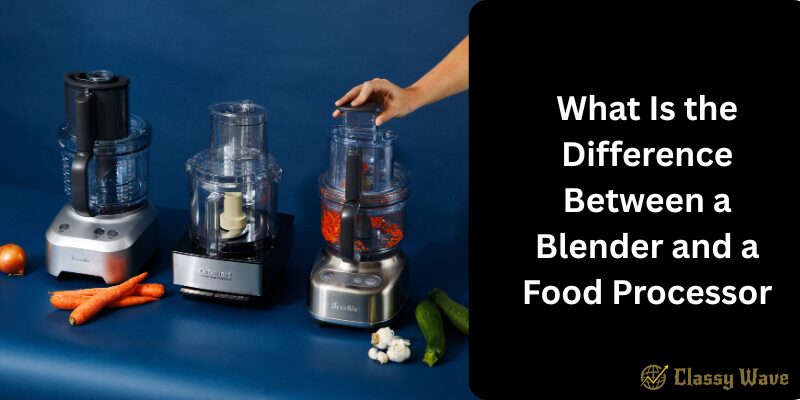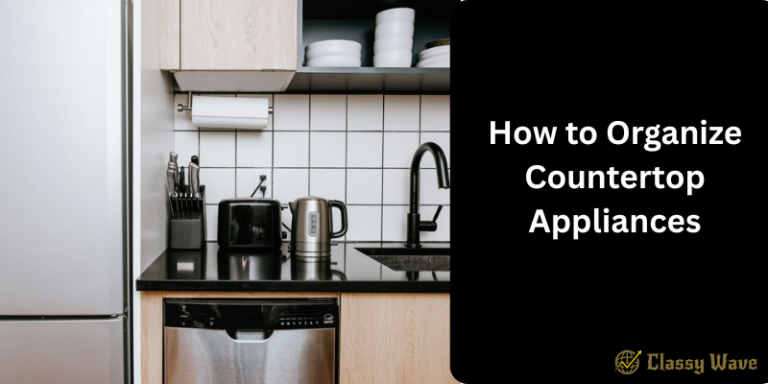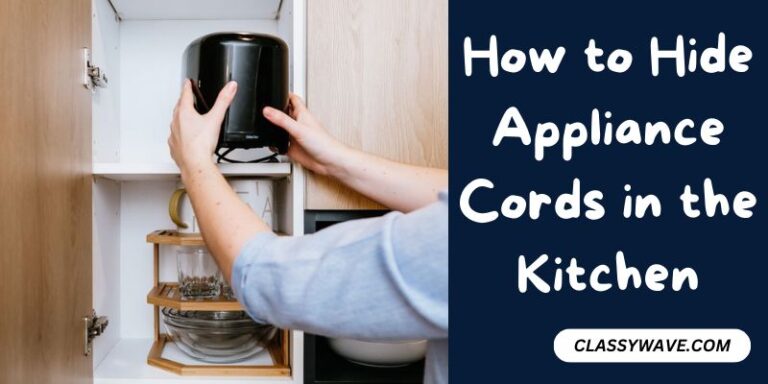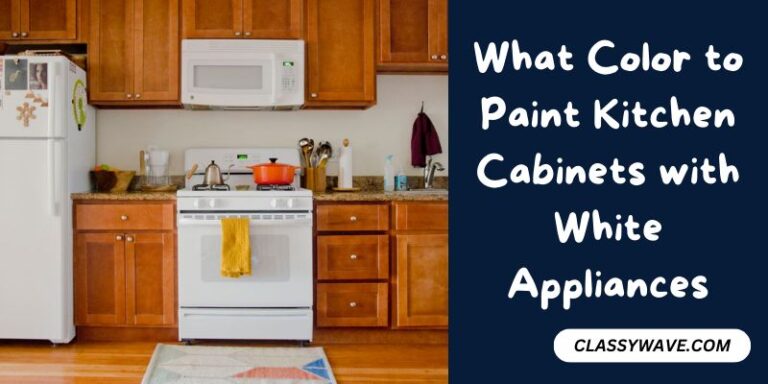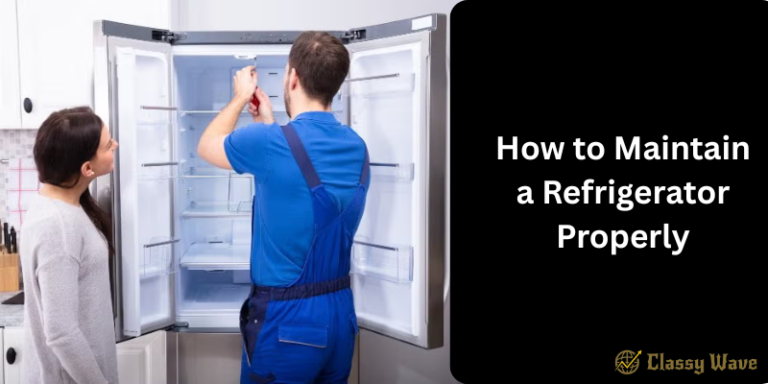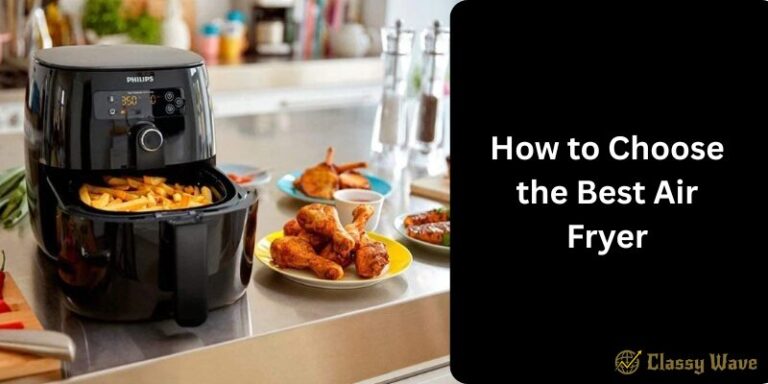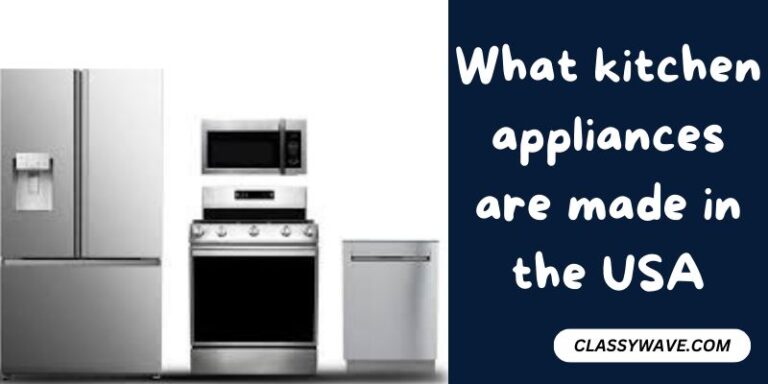What Is the Difference Between a Blender and a Food Processor | Classy Wave
If you enjoy cooking or preparing smoothies, you’ve likely wondered what the difference is between a blender and a food processor. At first glance, these two kitchen appliances look quite similar—they both come with a motor, sharp blades, and a container. However, they serve different purposes and excel at different types of tasks. Understanding their key differences can help you decide which one you actually need—or if you should have both in your kitchen.
What Is a Blender?
A blender is designed mainly for liquid-based recipes. It works best for pureeing, mixing, and emulsifying ingredients. The tall, narrow jar and high-speed blades are perfect for creating smooth, drinkable textures. Think of smoothies, soups, sauces, and milkshakes—this is where a blender shines.
Common Uses of a Blender
- Making smoothies and milkshakes
- Blending soups and sauces
- Crushing ice for drinks
- Mixing pancake or waffle batter
- Creating salad dressings or dips
Key Features of a Blender
- Shape: Tall and narrow for optimal liquid circulation
- Blades: Designed for high-speed rotation to create smooth textures
- Best for: Liquids, soft fruits, and light blending
Blenders are ideal for anything that requires a smooth, drinkable consistency.
What Is a Food Processor?
A food processor is a more versatile appliance designed for chopping, slicing, shredding, kneading, and mixing solid or semi-solid foods. It has a wide, flat bowl that gives ingredients room to move around while being processed. Most food processors come with multiple blades and attachments, making them multitasking machines.
Common Uses of a Food Processor
- Chopping vegetables and nuts
- Shredding cheese
- Making dough for bread or pizza
- Mixing dry ingredients
- Preparing salsa or pesto
Key Features of a Food Processor
- Shape: Wide bowl with flat blades
- Attachments: Different disks for slicing, shredding, or kneading
- Best for: Solid foods and meal prep tasks
Food processors make food prep much faster and easier, saving time in the kitchen.
Blender vs. Food Processor: The Key Differences
Let’s break down the main distinctions between these two popular appliances.
1. Purpose
- Blender: Best for liquids and smooth blends.
- Food Processor: Best for chopping, slicing, and mixing solid foods.
2. Design
- Blender: Narrow pitcher and tall blades for continuous liquid flow.
- Food Processor: Wide bowl and interchangeable attachments for varied food prep.
3. Blade Function
- Blender: Blades are sharp and angled to create a vortex that pulls liquids down.
- Food Processor: Blades are flatter and broader, cutting through thick or solid ingredients.
4. Texture of the Final Product
- Blender: Creates smooth, pourable mixtures like smoothies or soups.
- Food Processor: Produces chunkier textures suitable for dips, doughs, and salsas.
5. Liquids vs. Solids
- Blender: Needs liquids to function efficiently.
- Food Processor: Handles dry or doughy ingredients easily.
6. Attachments and Accessories
- Blender: Typically comes with one fixed blade and jar.
- Food Processor: Includes various blades, disks, and even dough hooks for versatility.
7. Cleaning and Maintenance
- Blender: Usually easier to clean since it has fewer detachable parts.
- Food Processor: Has more parts to clean, but they are usually dishwasher-safe.
When to Use a Blender
You should reach for your blender when you’re dealing with mostly liquids or soft ingredients. It’s perfect for:
- Smoothies and protein shakes
- Creamy soups
- Icy drinks and frappés
- Homemade sauces like hollandaise or tomato puree
The high-speed blending power makes it ideal for transforming ingredients into silky, smooth textures.
When to Use a Food Processor
A food processor is your go-to for heavier, more textured tasks. Use it when you need to:
- Chop onions, garlic, or carrots quickly
- Shred cheese or cabbage for salads
- Make pie dough or pizza dough
- Grind nuts or make nut butter
- Prepare hummus or chunky salsa
It’s a time-saving powerhouse for meal prep and baking.
Can You Use a Blender Instead of a Food Processor?
In some cases, yes—but with limitations. You can use a blender to make smoothies, purees, or even some sauces that a food processor could also handle. However, blenders struggle with dry or thick mixtures like dough or chopped vegetables.
If you try to make dough in a blender, you risk burning out the motor since it’s not built for that type of heavy mixing.
Can You Use a Food Processor Instead of a Blender?
A food processor can handle some blending tasks, but it won’t achieve the same smooth consistency. For example, it can make chunky soups or thick smoothies but won’t completely puree them. Also, since it’s not designed to hold a lot of liquid, it may leak when blending thinner ingredients.
Which One Should You Buy?
It depends on your cooking habits and the type of food you make most often:
- Get a Blender if you love smoothies, soups, and drinks.
- Get a Food Processor if you often chop vegetables, make dough, or prepare complex meals.
If you cook frequently, having both appliances in your kitchen is a great investment—they complement each other beautifully.
Combination Appliances: The Best of Both Worlds
Nowadays, many brands offer combo appliances that act as both blenders and food processors. These come with multiple jars and blades, allowing you to switch functions easily. If space or budget is limited, a combination appliance can be a smart solution.
Conclusion
While a blender and a food processor may look similar, they serve very different purposes in the kitchen. A blender excels at creating smooth, liquid-based recipes, while a food processor is designed for chopping, shredding, and mixing solid foods. Knowing which one to use not only saves you time but also improves the quality of your meals. Ultimately, whether you choose one or both depends on your cooking style—but either way, both are valuable tools that make food preparation faster and easier.

